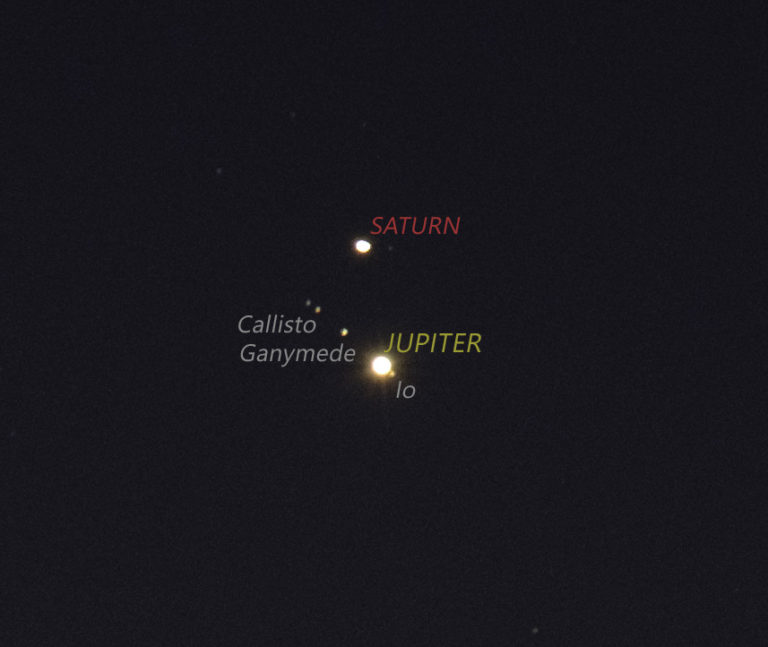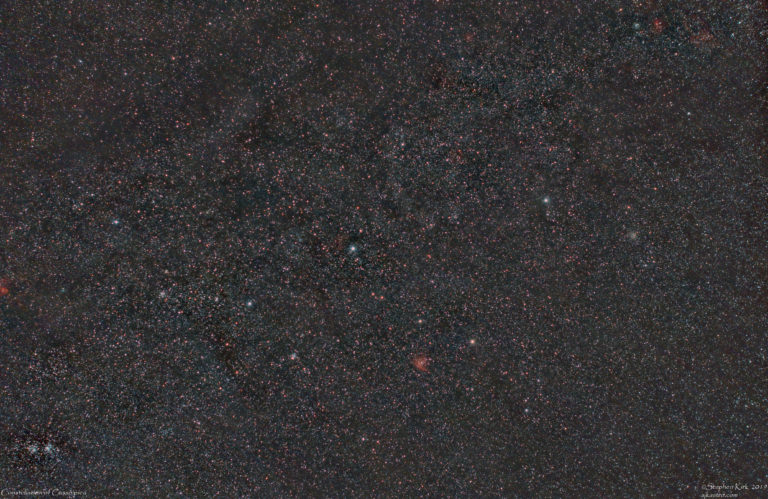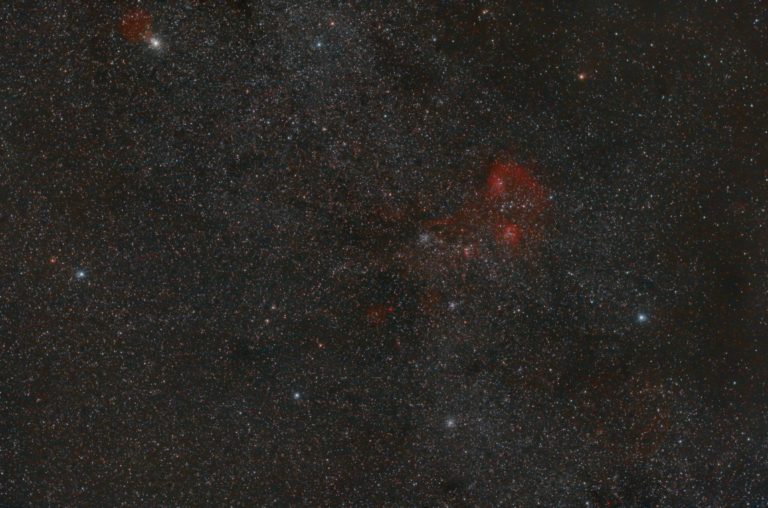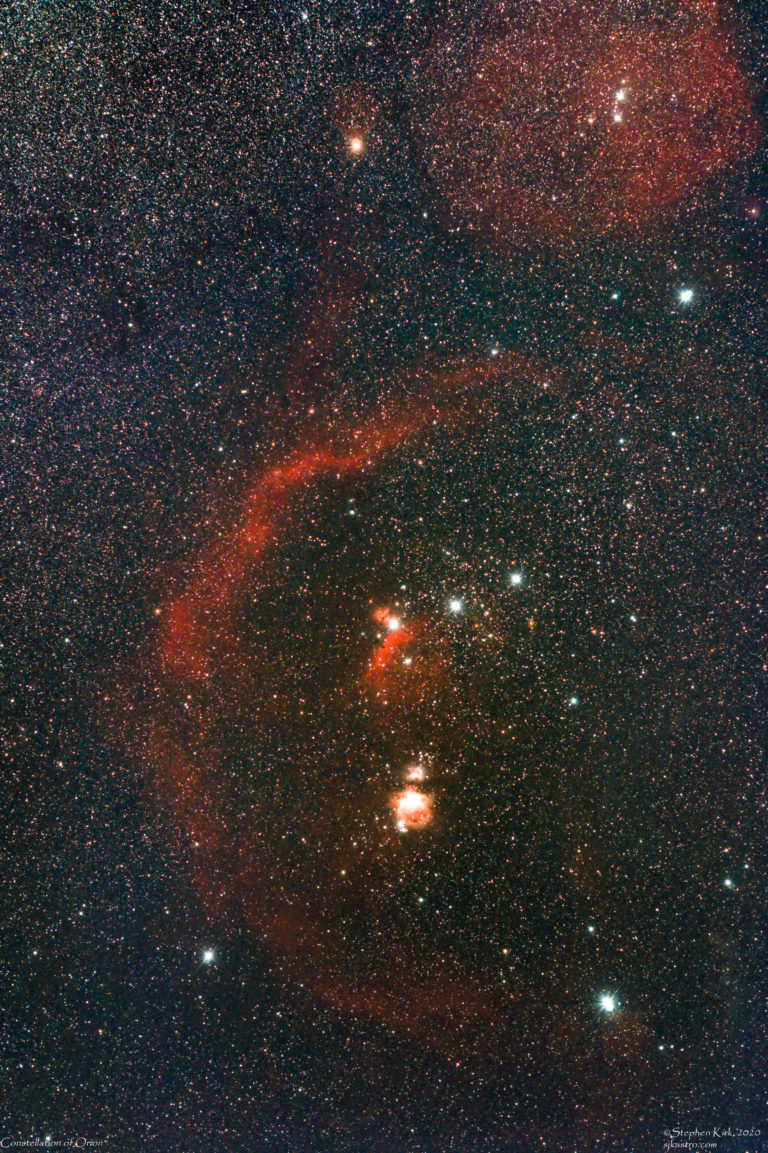Imaged with a FujiFilm X-T2 and a 55-200m zoom lens (set to 200mm). Camera mounted on a Skywatcher Star Adventurer to prevent smearing of the image due to 7 second exposures at that focal length. Imaged at F4 and ISO 800. Jupiter and Saturn Conjunction 20 December 2020, with aircraft landing at East Midlands airport! This set of pictures was taken almost one day before the planets’ closest approach and were taken on 20 December 2020 at 17:20. The closest approach itself was on the 21st December at 18:00 but that day was clouded out with very heavy rain where I live (as usual, most astronomy special events are clouded out in the UK – typical!). Jupiter and Saturn were around 32 arcminutes apart when this picture was taken, moving to their closest at around 30 arcminutes at their closest the following day. 30 arcminutes is about the same diameter…
Share on facebook Facebook Share on twitter Twitter Share on pinterest Pinterest A far Northern constellation – circumpolar from my location in Nottingham – Cassiopeia lies in the middle of numerous star fields and nebulae fields, looking out from the core of the galaxy. The famous “W” shape is very recognisable and one of the first constellation that beginners to astronomy learn. It is rich in interesting nebulae, star clusters and other objects. Cassiopiea Image above was taken at the beginning of March 2020 when Cassiopeia was setting towards the North West. Conditions were not very good with the seeing and transparency being quite poor. Nevertheless, I managed to grab 45 x 60s exposures at ISO 800 and F4 with Canon 1100D and 50mm lens. Quite a quick and dirty picture and more exposure time would reveal much finer detail and nebulae details.Even in this image, you can see the…
Auriga – A famous constellation in the winter Northern Hemisphere sky, Auriga contains many very interesting objects and nebulae. Arguably the most important of these objects are the famous Open Clusters M36, M37 and M38, all of which I have imaged individually. This image was taken in January 2020 from my backyard in Nottingham, UK on my modified (i.e. with the IR filter removed) Canon DSLR 1100D and a Canon 50mm lens. It is composed of 80 x 90s exposures at ISO 800 at F4, mounted on a Skywatcher Star Adventurer sky tracker mount. Astrophotography does not have to be expensive and you can achieve great things with a DSLR and a tracking mount! Auriga Below, to the left, is an annotated version of the above picture and it shows many of the interesting objects present within the constellation of Auriga. You can see the many Sharpless catalog (Sh2) objects…
Orion Dominating the Winter sky in the Northern Hemisphere, Orion is probably the most recognisable of constellations. It is full of very important and popular astronomy objects and stars. The image here is a stack of 80 x 80 second exposures at F4 and ISO 800 taken in January 2020 from my backyard in Nottingham with a modified Canon 1100D and a 50mm lens. The camera followed the sky with a Star Adventurer tracker. It was cold and windy at the time I took the exposures. I stacked them with Deep Sky Stacker and processed with PixInsight and Photoshop. You can see the arc of Barnard’s Loop and The Orion Nebula and Horsehead Nebula. Also visible glowing faintly to the bottom right is the ghostly outline of the Witch Head Nebula. Orion Below is the annotated version showing many of the interesting stars and objects within Orion. Very obvious is…




